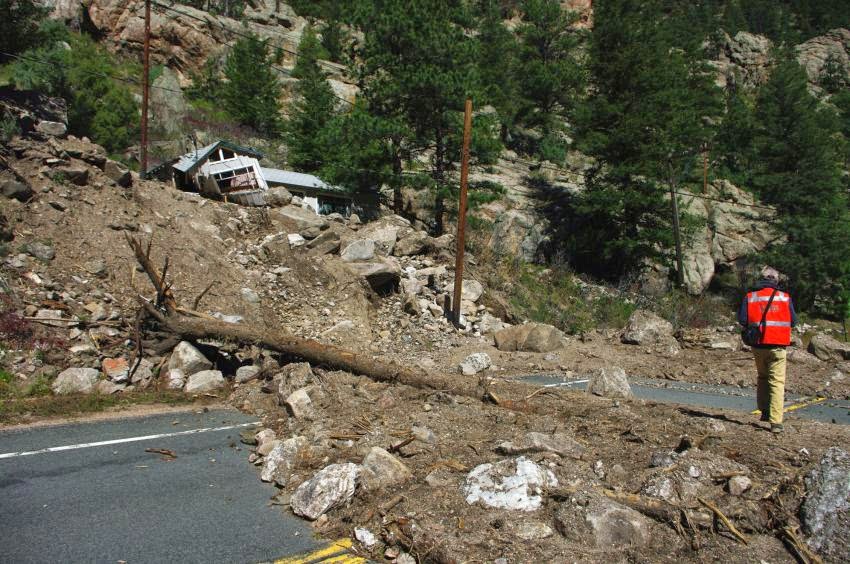
Massive flooding in Colorado in September 2013, and the concomitant landslides and debris flows, caused widespread damage across the Front Range. In the October issue of GSA Today, Jeffrey Coe, Jason Kean, Jonathan Godt, Rex Baum, and Eric Jones at the U.S. Geological Survey; David Gochis at the National Center for Atmospheric Research; and Gregory Anderson of the Boulder Mountain Fire Protection District present insights on hazard assessment gained from this extraordinary debris-flow event.
Between 9 and 13 September 2013, more than 1,100 debris flows occurred in an area of about 3,400 square kilometers, most of which were triggered by two periods of intense rainfall: one lasting 12.5 hours on 11–12 September, with a maximum 10-minute intensity of 67 mm/hour, the other lasting 8 hours on 12 September, with a maximum intensity of 39 mm/hour.
Almost all of the flows were initiated on steep (greater than 25 degrees), south- and east-facing canyon and hogback slopes with upslope contributing areas of more than 3,300 square meters, the largest at elevations above 2600 m. Areal concentrations of the flows show that colluvial soils on sedimentary rocks were more susceptible than soils on crystalline rocks.
This major flooding event serves as an alert to authorities and residents in the Front Range and other interior continental areas with steep slopes. In these locations, widespread debris flows are unusual—yet their threat may be all the greater because of their infrequency.
More information:
New insights into debris-flow hazards from an extraordinary event in the Colorado Front Range , Jeffrey A. Coe et al., U.S. Geological Survey, Denver Federal Center, MS 966, Denver, Colorado 80215, USA. Pages 4-10 DOI: 10.1130/GSATG214A.1
Note : The above story is based on materials provided by Geological Society of America










